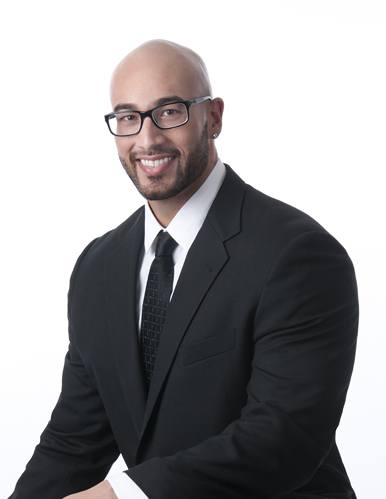
Health is like money. We never have a true idea of its value until we lose it.
Josh Billings
Oftentimes, the desire to reduce body fat has to do with goals such as feeling and looking better. Yet, we also know that controlling body fat plays an important role in promoting long-term health. In particular, visceral fat is especially dangerous and is associated with serious risk factors if left unaddressed.
Unlike the fat you can pinch, which is found just below the skin, called subcutaneous fat, visceral fat runs deeper. In some cases, it’s, therefore, less noticeable from the outside – but actually more important to manage for long-term health. Discover what you need to know about this type of fat below.
Visceral fat is located deeper in the body than subcutaneous fat. Unlike subcutaneous fat, which can be found all across the body, visceral fat is concentrated in the abdominal cavity. It’s therefore located close to the body’s vital organs, including the stomach, liver, and intestines. It’s so close to the liver, in fact, that the organ can turn it into cholesterol. Once that happens, the fat enters the bloodstream and accumulates along the artery walls, leading to their hardening and narrowing, known as atherosclerosis. [1]
As you might imagine, this makes visceral fat especially dangerous. Discover just how deep the danger runs below.
Whereas subcutaneous fat is often addressed due to cosmetic concerns, visceral fat is the type most linked to health concerns, including an increased risk for:
Moreover, regardless of body weight, this fat is also associated with an increased risk of premature death. In fact, research has shown that women who were considered to have a normal body mass index yet had a larger waistline had an increased risk of dying from cardiovascular disease. Visceral fat is therefore often a sneaky, overlooked health issue, as it could go unnoticed when physicians follow conventional bodyweight standards. [2]
Known as a biologically active fat, visceral fat disrupts the normal balance of hormones. It also has an inflammatory effect, as it releases the immune system chemicals known as cytokines, which increase the risk of cardiovascular disease. Cytokines are also believed to have negative effects on blood clotting, cells’ sensitivity to insulin, and blood pressure levels. [3] With these harmful effects, it comes as no surprise that carrying excess visceral fat is linked to the diseases listed above, in addition to stroke, heart attack, breast and colorectal cancer, and Alzheimer’s disease. [4]
Some experts suspect another reason visceral fat is so dangerous is that it’s closely located in the portal vein, the key pathway through which blood travels from the intestinal area to the liver. Free fatty acids and other substances released by visceral fat can therefore make their way into this vein and to the liver, where they can impact blood lipids, and subsequently, total cholesterol and insulin resistance. [5]
Unfortunately, the root causes behind visceral fat development are numerous. There are a few potential issues at play, outlined below.
Regardless of its cause, however, addressing visceral fat is a critical aspect of improving your current health and promoting future wellness. Yet, in order to address it, you need to be able to tell whether you have it in the first place.
CT and MRI scans are some of the only ways to provide a definitive diagnosis of visceral fat. Fortunately, however, the following methods are some other ways you may be able to tell whether you could have an excess concentration of visceral fat:
In general, talking to your doctor about your concerns about visceral fat is a good place to start. Here at Cenegenics®, our team can help you learn more about your visceral fat risk from the moment you join our program, as we provide patients access to DEXA scans, among other innovative technologies leveraged in our Elite Health Evaluations.
Unfortunately, restricting your calories and increasing exercise alone are often insufficient for getting rid of visceral fat. Instead, this stubborn fat requires a more tailored approach, and often, the guidance and expertise of clinical experts.
Because it’s not just excess weight but actually an active fat, visceral fat warrants specific interventions. Experts acknowledge that dietary changes alone aren’t enough for addressing deep belly fat. In fact, research has shown that restricting calories didn’t work to remove belly fat in study participants, but combining diet with consistent exercise showed results. [10] Thus, it’s not simply how much we eat, but also what we eat, that plays a role in visceral fat development or loss.
In particular, monitoring saturated fats and removing harmful trans fats is recommended for tackling visceral fat. Sources of these fats include packaged snacks and desserts, fried food, and other heavily processed foods. [11]
Similarly, certain types of exercise may also be more effective for combatting this type of fat. Moderate exercise is recommended. For some, this could be brisk walks, taken at least six days a week, while others can incorporate high-intensity interval training programs for as little as 15-20 minutes, three days a week. Yet, aerobic exercise also needs to be coupled with resistance training for belly fat to budge. While strengthening exercise may not always lead to significant changes on the scale, it can lead to big changes in visceral fat concentration. Combining aerobic exercise with strength has also been shown to reverse some characteristics of metabolic syndrome, including:
It also offers a reduced risk of heart disease, stroke, and type 2 diabetes. [12]
Of course, as with any approach to weight loss, certain individuals may respond to different tactics better than others. For this reason, it’s best to work with an experienced team with knowledge in not only visceral fat but also exercise and nutrition, for a comprehensive yet individualized approach to addressing belly fat.
Losing overall fat may help to address concerns like body image issues, but addressing visceral fat is the key tactic that can help you optimize your health not only now, but also into the future. Of course, pursuing any weight loss goals can seem a bit daunting at first. Fortunately, these goals become much more achievable when you have the expertise and support of the Cenegenics® team behind you.
Oftentimes, you’ll find Cenegenics® reviews that highlight the ways in which our team has helped adults lose – and maintain – weight as they age. Because visceral fat is an issue that becomes an increasing concern with age, it should be tackled by a clinical team that understands the changing needs of adults through the decades. And, there’s no group better suited for that than Cenegenics®.
Whether you’re curious about Cenegenics’® cost, how we can help you lose weight and keep it off, or the many perks of our program, don’t hesitate to contact the center nearest you for more information.
Our world-class physicians create a personalized plan to help you feel 10+ years younger. You’ll be more energetic, lose weight, sleep better, have more libido, and think more clearly. Click below to schedule a free consultation with one of our physicians. It’s quick + easy.
Key Resources
This guide was produced with contributions from the following key resources:
The Cenegenics Education and Research Foundation
The Textbook of Age Management Medicine Volume 1: Mastering Healthy Aging Nutrition, Exercise and Hormone Replacement Therapy
The Cenegenics Education and Research Foundation
The Textbook of Age Management Medicine Volume 2: Mastering Healthy Aging Nutrition, Exercise and Hormone Replacement Therapy
Textbook Authors:
Jeffrey Park Leake, M.D., CPT
Dr. Jeffrey Park Leake is a Partner and Director of Education at Cenegenics Elite Health specializing in age management and wellness. Having trained hundreds of physicians worldwide, Dr. Leake is also the Director of Education for the Clinical Strategies for Healthy Aging course at AMM Educational Foundation.
Todd David Greenberg, M.D., CSCS
Dr. Todd Greenberg is a practicing physician with a broad range of expertise, including wellness, exercise, sports injuries, and MRI of sports injuries. He is a Radiology Clinical Associate Professor at the University of Washington.
Additional Resources
Examples of Micronutrients That Can Help You Lose Weight
Achieving Healthy Weight Loss: The Problem with Fad Diets
6 Healthy Habits to Practice Every Day
Healthy Living: 5 Key Strategies for a Healthy & Productive Day
How to Lower Cholesterol Levels With These Easy Lifestyle Changes
Youth is a Feeling – Not A Number
Telomere Function in the Aging Process
Neurocognitive Testing: What Is It & Is It Right For You?
Do You Recognize the 6 Warning Signs of Adrenal Fatigue?
What is Andropause? And How Is It Affecting You?
6 Easy Tips to Keep Your Lost Weight Off
References
[1] The Skinny on Visceral Fat. Johns Hopkins. Derived from: https://www.hopkinsmedicine.org/gim/core_resources/Patient%20Handouts/Handouts_May_2012/The%20Skinny%20on%20Visceral%20Fat.pdf
[2] Belly fat in women: Taking – and keeping – it off. Mayo Clinic Staff. Derived from: https://www.mayoclinic.org/healthy-lifestyle/womens-health/in-depth/belly-fat/art-20045809
[3] Abdominal fat and what to do about it. Derived from: https://www.health.harvard.edu/staying-healthy/abdominal-fat-and-what-to-do-about-it
[4] Risks and dangers of carrying visceral fat. Derived from: https://www.medicalnewstoday.com/articles/320929.php#risks-and-dangers-of-carrying-visceral-fat
[5] See above. https://www.health.harvard.edu/staying-healthy/abdominal-fat-and-what-to-do-about-it
[6] Age Related Shift in Visceral Fat. Hunger, Gary; Gower, Barbara A.; Kane, Brandon L. Derived from. https://www.ncbi.nlm.nih.gov/pmc/articles/PMC4018766/
[7] See above. https://www.mayoclinic.org/healthy-lifestyle/womens-health/in-depth/belly-fat/art-20045809
[8] What is Visceral Fat? Derived from: https://www.webmd.com/diet/what-is-visceral-fat#1-2
[9] What is a Dexa (DXA) Scan? Derived from: https://www.dexafit.com/dexau/dxa-dexa-scan
[10] See above. https://www.hopkinsmedicine.org/gim/core_resources/Patient%20Handouts/Handouts_May_2012/The%20Skinny%20on%20Visceral%20Fat.pdf
[11] See above. https://www.hopkinsmedicine.org/gim/core_resources/Patient%20Handouts/Handouts_May_2012/The%20Skinny%20on%20Visceral%20Fat.pdf
[12] See above. https://www.hopkinsmedicine.org/gim/core_resources/Patient%20Handouts/Handouts_May_2012/The%20Skinny%20on%20Visceral%20Fat.pdf
 Contributor: Rudy Inaba Vice President of Health Performance
Contributor: Rudy Inaba Vice President of Health Performance
Rudy Inaba is Cenegenics’ Vice President of Health Performance. He is a recognized fitness and sports nutrition consultant with nearly 15 years of experience in clinical exercise physiology and lifestyle management. After pursuing his Master of Science in Clinical Exercise Physiology at the University of Nevada Las Vegas, Rudy joined Cenegenics where he leads 19 clinical locations nationwide in their advancements in kinesiology, nutritional biochemistry, and their analyses of industry research & market trending.


